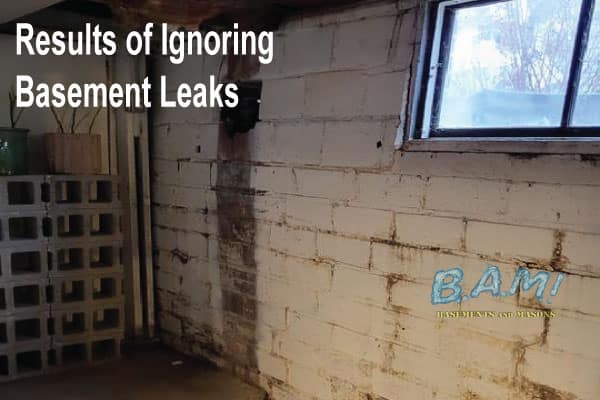An Unbiased View of Best Basement Waterproofing
An Unbiased View of Best Basement Waterproofing
Blog Article
The 3-Minute Rule for Best Basement Waterproofing
Table of ContentsWhat Does Best Basement Waterproofing Mean?The smart Trick of Best Basement Waterproofing That Nobody is Talking AboutSome Ideas on Best Basement Waterproofing You Need To KnowThe Of Best Basement WaterproofingSome Known Incorrect Statements About Best Basement Waterproofing
AdvantaClean's skilled experts and specialists will locate the water source. If wall surface or slab splits are present, we will certainly infuse polyurethane and epoxies right into the splits and seal the compromise, stopping further moisture from entering.
If there's condensation on the outside of the foil, you have high humidity in your basement. If the foil has condensation on the inside surface (next to the wall surface), the soil around your residence may be normally damp from a high water table or poor dirt drainage.
You can waterproof simply your indoor walls, which may solve the trouble. Once they dry out, they adhere permanently to concrete and masonry walls.
The Definitive Guide to Best Basement Waterproofing
Concrete waterproof coverings can not be applied to formerly painted surface areas; inspect the tag. Known as densifiers, they are ideal just for walls that have not been painted or secured.
Yet you brush, roll, or spray it on a lot more thickly one gallon covers just 75 square feet, not the 300 square feet regular with typical paint. Water resistant paint is great for do it yourself application. You can use it over repainted surfaces, and paint over it once it's treated (one gallon costs $37).
It can cost $10,000 to $15,000, depending upon the job needed. Outside waterproofing entails excavating all over your home fully deepness of the structure walls, then setting up a water-proof covering or membrane layer topped by drainage panels. The panels offer a very easy path for water to stream to an external French drain at the end of your foundation.
A basement without waterproofing is kind of like that. Your basement doesn't desire to go via a rainstorm without proper protection just as much straight from the source as you do not want to.
A Biased View of Best Basement Waterproofing
If you've done your research, you would certainly recognize there are 2 kinds of waterproofing: inside and outside. It can get perplexing what they both mean, which one's a better financial investment, and what will really keep the water out. Don't stress, we created this blog site to easily define both approaches for you and talk about the benefits and drawbacks of each.
Exterior waterproofing is a waterproofing approach that involves sealing your home from the outside. It's type of like a moat around a castle. It involves excavating a trench around your entire residence down to the foundation (concerning 8 to 10 feet down). The foundation walls are then cleansed, sealed, and covered with a waterproof membrane or sealant.
The Best Guide To Best Basement Waterproofing
It's an extra involved procedure that needs digging up your backyard, which is costly and lengthy. Outside waterproofing involves removing everything surrounding the residence, including patios, driveways, sidewalks, landscape design, AC units, decks, and so forth. If any one of the work was done improperly and water is still entering your basement, there isn't much you can do to fix or fix it.
Interior cellar waterproofing involves waterproofing from the within. Any kind of water that leakages into your cellar is redirected before it touches your floor.
It's a reliable approach to water-proof your cellar - Best Basement Waterproofing. The drawback of indoor cellar waterproofing primarily relates to the installation process. This method needs kept products, furnishings, and integrated shelving or cupboards to be moved from touching the cellar wall surfaces. And throughout setup, your cellar can not be utilized. The biggest difference in between both approaches is this: Exterior waterproofing is a preventative option and interior waterproofing is a rehabilitative option.
The Facts About Best Basement Waterproofing Revealed
Finally, click this link outside and indoor cellar waterproofing are both reliable methods of securing your home from water damages. Outside waterproofing creates a barrier that protects against water from entering visit the site your home, while indoor waterproofing reroutes water that does enter your home. And it is essential to keep in mind that exterior waterproofing is a pricey and disruptive installment procedure when compared to indoor waterproofing.
Whichever technique you choose, make certain you choose a reliable and trustworthy specialist for the task. If you have any kind of concerns about basement waterproofing, please reach out to us.
You can fill in our form here, begin a chat in the bottom right-hand corner, or call us at 1-800-827-0702.
Report this page